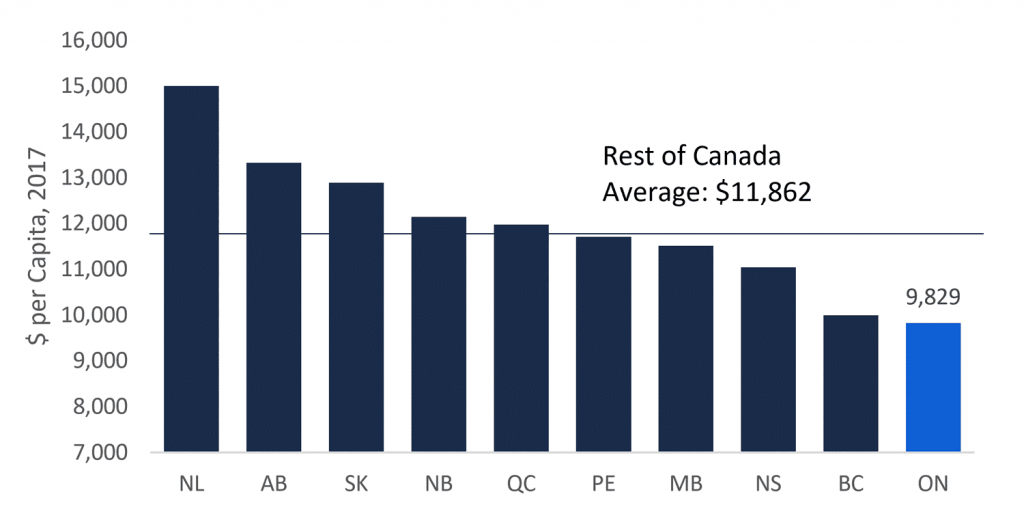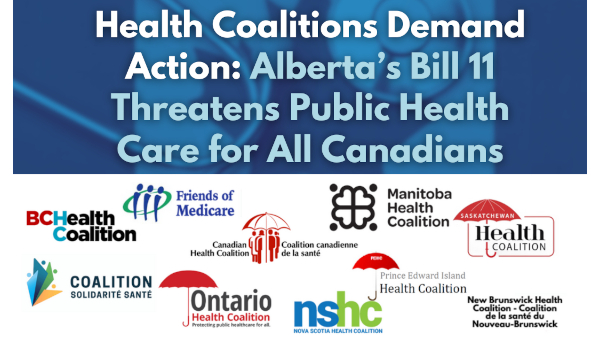PC Government Plans Many More Healthcare Cuts
The Financial Accountability Office of Ontario (FAO) Economic and Budget Outlook review has identified planned government spending savings that come via [1] announced program changes (program cuts like the government’s cut to OHIP+), [2] announced efficiency targets (identified areas where the government hopes it will find savings without service cuts), and [3] cuts that have not yet been announced by the government.
While the government has identified some spending cuts of type 1 or 2 above, the government’s spending plan needs billions of dollars in extra, unidentified and unannounced cuts to meet its savings targets according to the FAO (type 3 cuts, as above). For healthcare, this amounts to $5.2-billion in unidentified and unannounced cost savings needed for the government’s health spending plan to work in 2023-24. Even though the cuts identified to date have been major and painful, $5.2-billion is many times more than the cuts announced and implemented to date.1
The unidentified and unannounced health cuts exist even for this fiscal year – but they become a much bigger issue as the years go along until they account for $5.2-billion out of $8-billion in total healthcare cuts required by the government’s fiscal plan in 2023-24.

Other ministries also must make billions of dollars in unidentified cuts for the government to meet its spending plan. In two years the government plans to implement some $5.9-billion in cuts that are currently unannounced (in addition to the $5.7-billion already announced for that year). And it gets much worse in the years after that. Here’s the chart for all program spending.

The FAO notes the cuts are [a] similar to the level of cuts in the 1990s, and [b] equal to about 10% in real terms for all program spending – about a $1,100 per person cut (in constant dollars) for all program spending.

Ontario already has the lowest provincial government program spending, over $2,000 less per person than the Canadian average.

While the cuts imposed by the Mike Harris Progressive Conservative government (1995 to 2002) were particularly painful in its first Budget, they lasted only a couple of years before that government was required to reverse its policy in its third year, when it recognised reality and increased program spending by 8%. The new Progressive Conservative government plans at least five years of austerity (there are no reports from the government yet about what it plans to do in years six and beyond).

The FAO also reveals that the government’s plan also has some unannounced tax changes that will reduce revenue by $0.2-billion in 2020-21, and by $3.6-billion in 2023-24. So, not only has the PC government introduced billions in tax cuts this year, we will also get more, as yet unannounced, tax cuts in the years ahead. These revenue cuts delay the achievement of a balanced budget, deepen the provincial debt, and require more cuts to social programs. And these tax cuts are planned even as the government continues to claim – with shameless hypocrisy – that the program cuts it is imposing are required by the province’s fiscal situation.
Revenue Impact of Unannounced Tax Policy

Bottom line – The government must identify and implement very major cuts for healthcare (and all social programs) over the next five years if it keeps to its Budget plan.
Local communities need to speak out and require this government to change direction – just as the previous PC government did. •
Endnotes
- Much of the rest of the savings ($2.7-billion in 2023-24) are simply government ‘efficiency targets’ – i.e. savings where the government has identified an area where they wish to reduce spending. But these efficiency targets may not be much more than wishful thinking (like their claim that they will save a billion dollars annually by taking over the healthcare supply chain, or their claim they will cut health agency spending by $350-million with the creation of Ontario Health, or their plan to cut $250-million in health worker overtime, sick leave, premium payment, and etc. by 2021-22).





